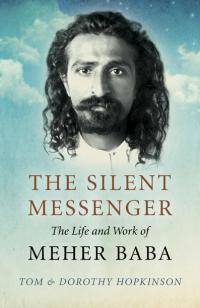Tom & Dorothy Hopkinson
Sir Tom Hopkinson and Lady Dorothy Hopkinson were followers of Meher Baba and they were key figures in the UK Meher Baba Association.
Sir Tom Hopkinson was a British editor and a leading figure in the development of photojournalism. Previously a freelance journalist, in 1934 he joined the Weekly Illustrated. In 1938, together with Hungarian-born editor Stefan Lorant, he co-founded Picture Post, the first British magazine to prioritise pictures and to record the lives of ordinary people.
For ten years, from 1940, Hopkinson was chief editor of Picture Post, and its witty sister publication Lilliput, eventually leaving his post following a political disagreement with the magazine’s owner.
In 1941, Hopkinson published his Plan for Britain, which included minimum wages throughout industry, full employment, child allowances, a national health service, the planned use of land and a complete overhaul of education. He helped to establish the non-partisan 1941 Committee, chaired by J. B. Priestly and comprising numerous intellectual and political figures of the day.
Having worked as features editor of the News Chronicle from 1954 to 1956, he then moved to Johannesburg to edit Drum, a publication aimed at the urban black community in South Africa. The rise of apartheid in the country led him to resign from the Drum and leave South Africa, but he continued to work with and on behalf of black African journalists during his time as regional director of the International Press Institute in Nairobi, Kenya, from 1963 to 1966. He returned to the UK in 1967, where he then taught journalism and also wrote his memoirs. He received a knighthood in 1978, for services to journalism. In 2016 the Tom Hopkinson Centre for Media History in Cardiff was opened, named after him in recognition of his stature as a journalist.
Lady Dorothy Hopkinson was the daughter of a musician and music hall performer. The eldest of ten, she grew up near Leeds and left school at twelve to work in a factory. At nineteen she became a revue dancer in London and Paris. She was part of a wide social circle with many writers and artists as friends, including the sculptor, Jacob Epstein.
Dorothy was almost entirely self-educated, extensively read and highly perceptive. Her second marriage was to the author Hugh Kingsmill. While their four children were very young she designed and made dresses from her kitchen table, but the outbreak of war put a stop to these activities. She also started to study the new science of psychoanalysis. At first friends, and then others, came to her for help, and she became a ‘lay’ psychoanalyst.
Tom Hopkinson also became a close family friend and, a few years after Hugh’s death, Tom and Dorothy married. Dorothy played a significant role in Tom’s professional and literary life in Britain and Africa, and after returning to the UK, they co-wrote Much Silence: Meher Baba his life and work, first published by Gollancz (1974), then Dodd Mead (NY), and later in Australia and India. It was also translated into German, Spanish and French.



